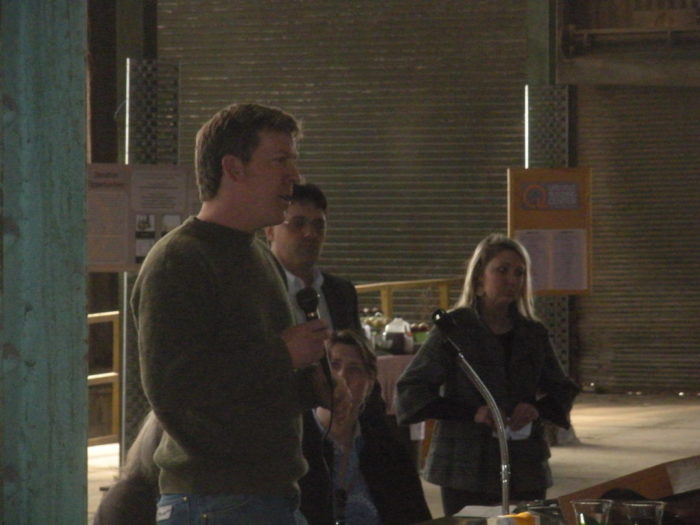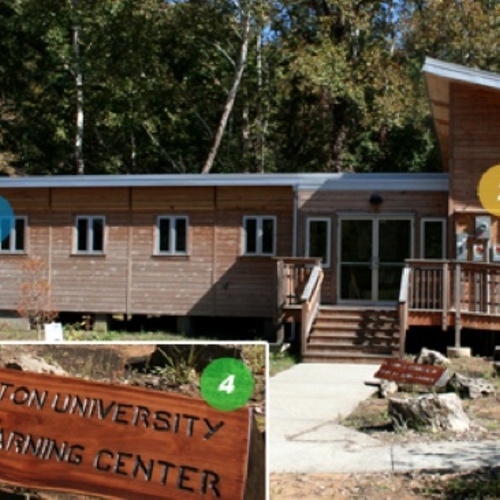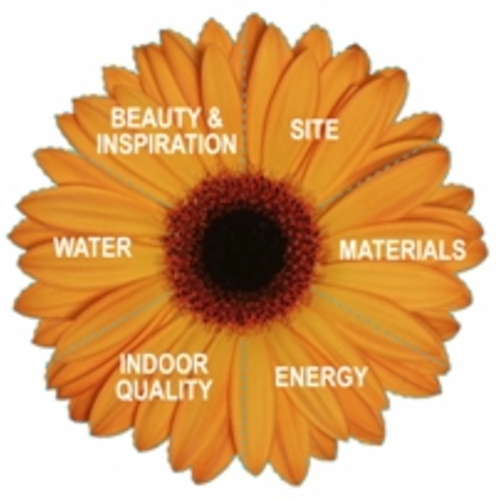I recently attended the grand opening for the Lifecycle Building Center (LBC), a new non-profit organization focused on building material reuse. The result of long hours of labor by many dedicated people, the LBC’s stated mission is to “make the lifecycle use of the built environment more efficient and sustainable.”
Currently established as a subsidiary of the USGBC Georgia chapter, the center’s ultimate goal is to be an independent organization that is fully self-sustaining. The LBC has an impressive board of directors, including professionals from Perkins + Will, Southface, the Georgia Trust for Historic Preservation, Skanska, and HOK. Currently an all-volunteer effort, they have already begun collecting surplus building products and are starting to sell them for reuse.
Community revitalization goals
The center is located on the Atlanta Beltline, a 22-mile loop of mostly abandoned rail lines that is currently being developed into a transit greenway consisting of trails, parks, and a future transit system that will connect many of intown Atlanta’s neighborhoods.
The center’s founders hope to play a role in the development of underutilized properties adjacent to this corridor. They are also planning local community outreach efforts, including hiring residents to work there as well as teach building skills to people in this somewhat down-at-the-heels part of town.
A great building
LBC is located in a small warehouse building that is attached to a beautiful 1914 factory building that they plan to take over as they grow. The building covers 72,000 square feet of space, and is little changed from its early days as a factory. The building includes operable clerestory windows and floors made of wood pavers.
There are plans in place to certify the warehouse under the Living Building Challenge – a very lofty goal. I am skeptical (is anyone surprised?), but I look forward to seeing how this develops.
Big challenges
Atlanta has never been a great place for recycling and salvaging building materials. Historically, landfill fees have been low, handling costs high, real estate values always increasing, and the demand for previously used materials low.
As tipping fees rise, labor prices drop, and real estate values remain low, I expect that there will be more demand for salvaged products. This model has been successful in other markets, and I have high hopes that it can work in Atlanta. It will be neither easy or fast, but I think the time is right for LBC to succeed.
Weekly Newsletter
Get building science and energy efficiency advice, plus special offers, in your inbox.














One Comment
high hopes
Sounds great and I hope it goes well. But doesn't Habitat have a strong presence in GA, and accompanying ReStores?
Anyway, we had one of these in Minneapolis for a number of years, before members of its similarly esteemed board ran it into the ground. Before that, while it had some nice salvaged flooring and a few other things, mostly it served as a repository for peeling lead-paint windows and doors that the center just couldn't unload, as the prices for the rest of its stuff slowly grew more preposterous. Instead, the Habitat ReStore and a few other places became the go-to salvage retail operations around here.
When its main center finally closed down a year or so ago, the organization's final appalling act was to give away (for free) the unsalable stuff it hadn't already dumped at auction. That meant all the deteriorating lead paint went to the people who needed a bargain more than they thought they needed properly-functioning/non-poisonous windows and doors (i.e., slumlords and the poor)--exactly the demographic that lead requirements are targeted to help. I sure hope there aren't any slumlords, poor people, or peeling lead paint on salvaged goods in Georgia, in case this venture doesn't work out.
Nothing quite like leaving behind landmines and uranium-tipped bullets when you've lost the war. So again, I wish this center great success, in conjunction with responsible oversight.
Log in or create an account to post a comment.
Sign up Log in